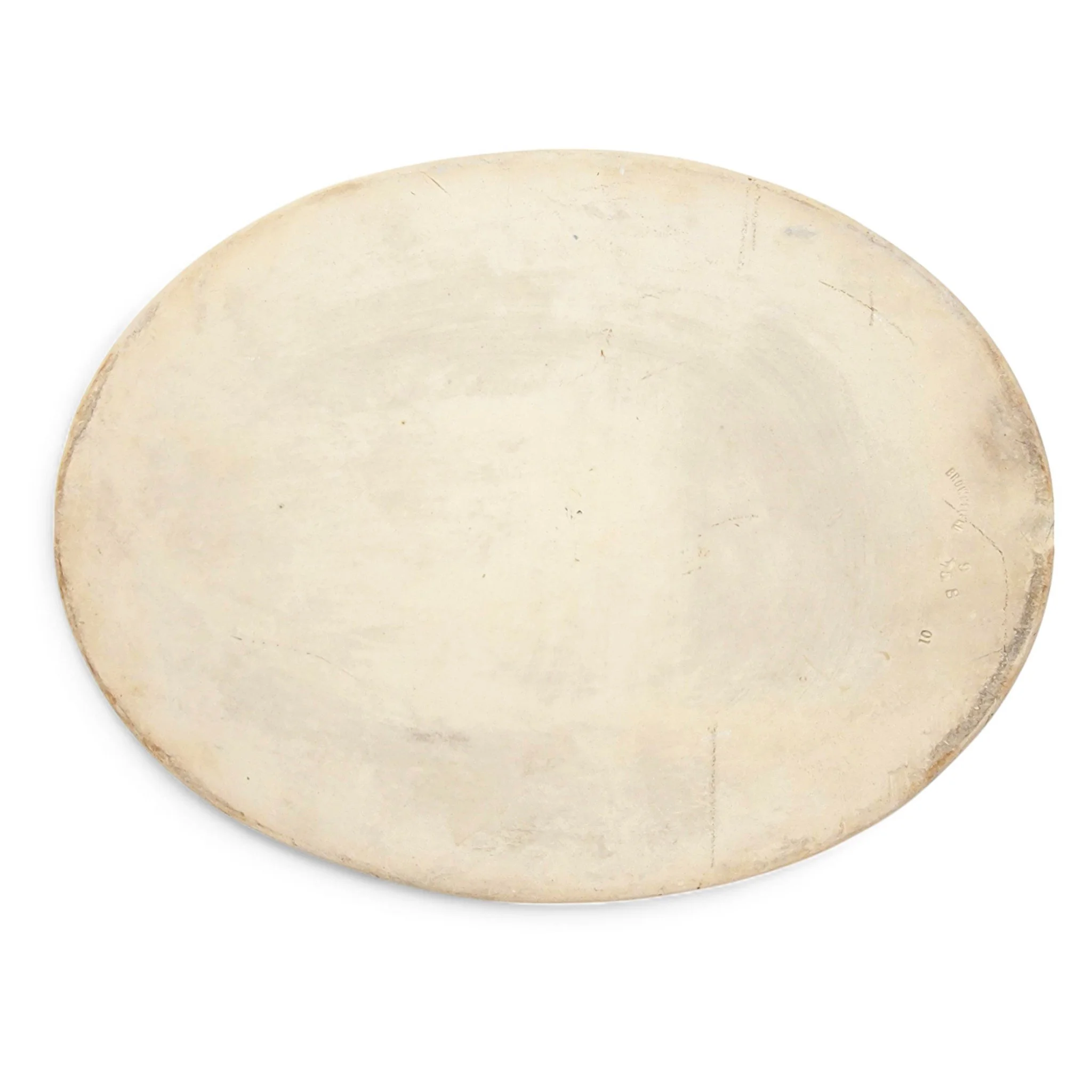 Image 1 of 9
Image 1 of 9

 Image 2 of 9
Image 2 of 9

 Image 3 of 9
Image 3 of 9

 Image 4 of 9
Image 4 of 9

 Image 5 of 9
Image 5 of 9

 Image 6 of 9
Image 6 of 9

 Image 7 of 9
Image 7 of 9

 Image 8 of 9
Image 8 of 9

 Image 9 of 9
Image 9 of 9










Victorian Brownfield stoneware game pie dish with bird finial and fern relief decoration, 1875
If you love pieces that tell a story, this rare Victorian stoneware game dish from Brownfield, Staffordshire, will win your heart. Dated September 1875, it’s a beautiful example of 19th-century craftsmanship — richly moulded in high relief with game birds, feathers, and fern fronds winding their way across the lid and sides.
The sculptural bird finial, likely a partridge or pheasant, is perched among detailed foliage, adding a wonderful three-dimensional charm. The soft buff tone of the biscuit-fired stoneware gives the piece a lovely matte texture, while inside, the glossy pale yellow glaze makes it practical for food service or just for admiring. Whether you use it for storage, a rustic centrepiece, or a decorative kitchen accent, it’s sure to bring character to any room.
The dish carries the impressed Brownfield mark and a clear date code for September 1875 — a nod to the rich heritage of this renowned Staffordshire maker, celebrated for their highly detailed moulded wares. Pieces like this were originally made to serve game pies at grand Victorian tables but feel just as at home today in a country kitchen, farmhouse setting, or as part of an Aesthetic Movement ceramics collection.
Weight: 2541 g
Height (with lid): 17 cm / 6.69″
Length: 28.8 cm / 11.34″
Width: 21.5 cm / 8.46″
Interior depth: 10 cm / 3.94″
In excellent antique condition. The intricate relief decoration remains crisp and sharp, with only minor signs of wear from age and careful use. The glazed interior is smooth and clean, making it both a practical and decorative treasure.
If you love pieces that tell a story, this rare Victorian stoneware game dish from Brownfield, Staffordshire, will win your heart. Dated September 1875, it’s a beautiful example of 19th-century craftsmanship — richly moulded in high relief with game birds, feathers, and fern fronds winding their way across the lid and sides.
The sculptural bird finial, likely a partridge or pheasant, is perched among detailed foliage, adding a wonderful three-dimensional charm. The soft buff tone of the biscuit-fired stoneware gives the piece a lovely matte texture, while inside, the glossy pale yellow glaze makes it practical for food service or just for admiring. Whether you use it for storage, a rustic centrepiece, or a decorative kitchen accent, it’s sure to bring character to any room.
The dish carries the impressed Brownfield mark and a clear date code for September 1875 — a nod to the rich heritage of this renowned Staffordshire maker, celebrated for their highly detailed moulded wares. Pieces like this were originally made to serve game pies at grand Victorian tables but feel just as at home today in a country kitchen, farmhouse setting, or as part of an Aesthetic Movement ceramics collection.
Weight: 2541 g
Height (with lid): 17 cm / 6.69″
Length: 28.8 cm / 11.34″
Width: 21.5 cm / 8.46″
Interior depth: 10 cm / 3.94″
In excellent antique condition. The intricate relief decoration remains crisp and sharp, with only minor signs of wear from age and careful use. The glazed interior is smooth and clean, making it both a practical and decorative treasure.
If you love pieces that tell a story, this rare Victorian stoneware game dish from Brownfield, Staffordshire, will win your heart. Dated September 1875, it’s a beautiful example of 19th-century craftsmanship — richly moulded in high relief with game birds, feathers, and fern fronds winding their way across the lid and sides.
The sculptural bird finial, likely a partridge or pheasant, is perched among detailed foliage, adding a wonderful three-dimensional charm. The soft buff tone of the biscuit-fired stoneware gives the piece a lovely matte texture, while inside, the glossy pale yellow glaze makes it practical for food service or just for admiring. Whether you use it for storage, a rustic centrepiece, or a decorative kitchen accent, it’s sure to bring character to any room.
The dish carries the impressed Brownfield mark and a clear date code for September 1875 — a nod to the rich heritage of this renowned Staffordshire maker, celebrated for their highly detailed moulded wares. Pieces like this were originally made to serve game pies at grand Victorian tables but feel just as at home today in a country kitchen, farmhouse setting, or as part of an Aesthetic Movement ceramics collection.
Weight: 2541 g
Height (with lid): 17 cm / 6.69″
Length: 28.8 cm / 11.34″
Width: 21.5 cm / 8.46″
Interior depth: 10 cm / 3.94″
In excellent antique condition. The intricate relief decoration remains crisp and sharp, with only minor signs of wear from age and careful use. The glazed interior is smooth and clean, making it both a practical and decorative treasure.


























